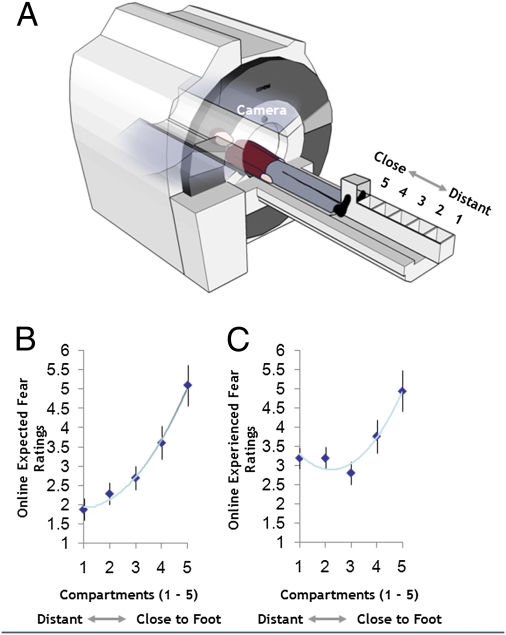Fig. 1.
Experimental paradigm and key behavioral results. (A) Participants were placed supine on the MRI scanner bed and asked to position their foot with the shoe removed into the open-topped imminence box. Participants believed that, via a camera feed, they could observe the experimenter moving the tarantula closer or further away from their foot in real time. The subjects’ tasks were to predict how afraid they believed they would feel (i.e., expected fear) when the spider was placed in a compartment previously indicated to them and then how scared they actually felt (i.e., experienced fear) when viewing the tarantula in that compartment. Mean group ratings for expected fear (B) and experienced fear (C) as a function of tarantula proximity.

